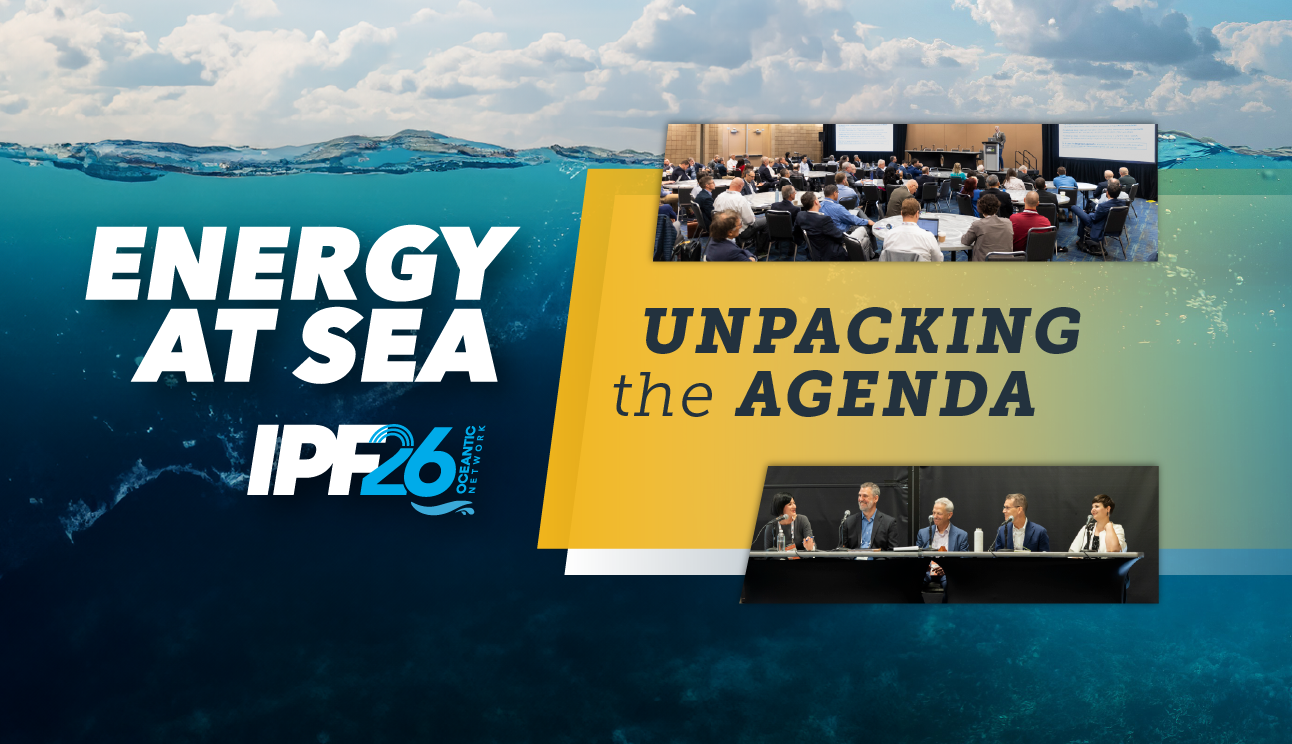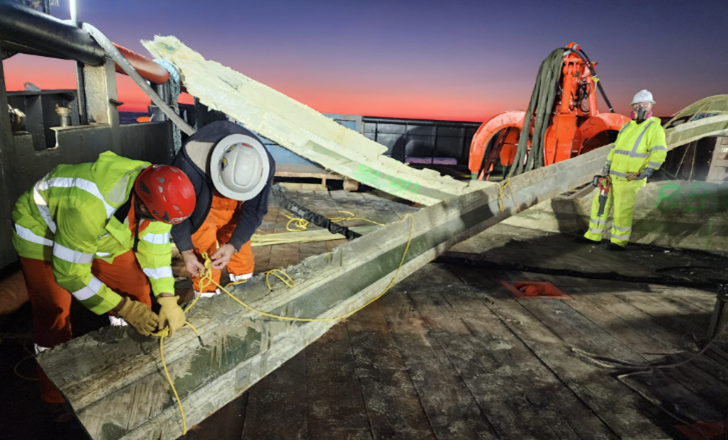Scotland is rapidly emerging as a global leader in floating offshore wind energy, offering a compelling opportunity for U.S. companies to expand into a thriving and strategically positioned market. During a recent Oceanic Network webinar, experts from Scottish Enterprise and Scottish Development International outlined the scale, ambition, and support available for American businesses looking to enter Scotland’s offshore wind supply chain.
With over 45 gigawatts in the pipeline and a government commitment of £500 million to strengthen the domestic supply chain, Scotland is not only investing in infrastructure but also actively seeking global partners. The country’s legacy in oil and gas has created a skilled workforce and robust port infrastructure, particularly along the northeast coast, that have transitioned into offshore wind.
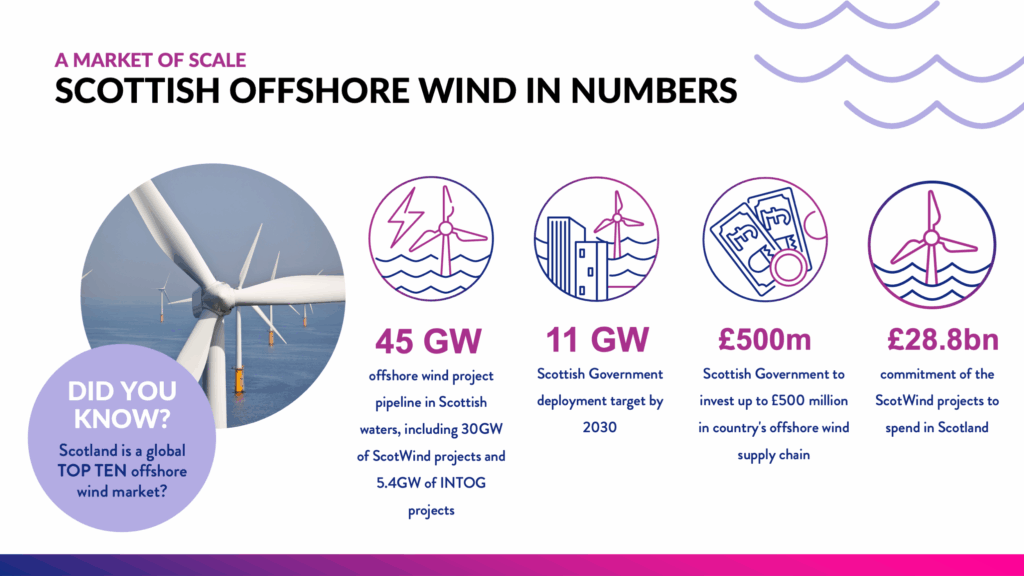
One of the most exciting developments is Scotland’s leadership in floating offshore wind technology. Projects like Kincardine, the world’s first floating offshore wind farm, and Sea Green, a fixed-bottom project, demonstrate Scotland’s technical capabilities and ambition. However, the majority of components for these projects have been sourced internationally due to cost competitiveness and a lack of domestic Tier 1 manufacturers. This presents a clear opportunity for U.S. companies to fill critical gaps in the supply chain, especially in manufacturing and assembly.
To address these challenges, Scotland has launched the Industrial Growth Plan, aiming to triple manufacturing output and double R&D investment. Key focus areas include blade and tower manufacturing, floating foundations, and next-generation operations and maintenance technologies. The plan also emphasizes innovation, automation, and sustainability—areas where U.S. firms can bring valuable expertise.
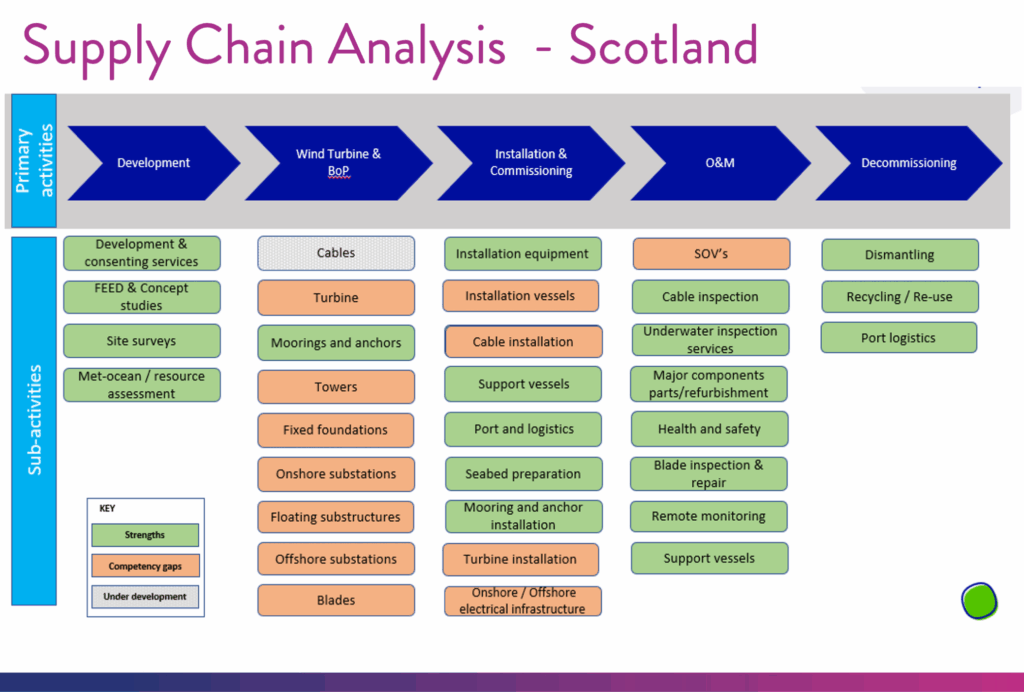
Grid infrastructure is another critical piece of the puzzle. Scotland is investing £32 billion to connect 23 gigawatts of offshore wind to the national grid by 2030, including high-voltage “superhighways” to transport energy from the north to demand centers in the south. This massive undertaking underscores the urgency and scale of Scotland’s energy transition.
For U.S. companies, the upcoming Global Gateway delegation trip to Scotland where delegates will attend and exhibit at the Floating Offshore Wind conference in Aberdeen (November 12–13), offers a unique chance to explore the market firsthand. Participants will benefit from B2B matchmaking, insider insights, and direct access to developers, ports, and policymakers.
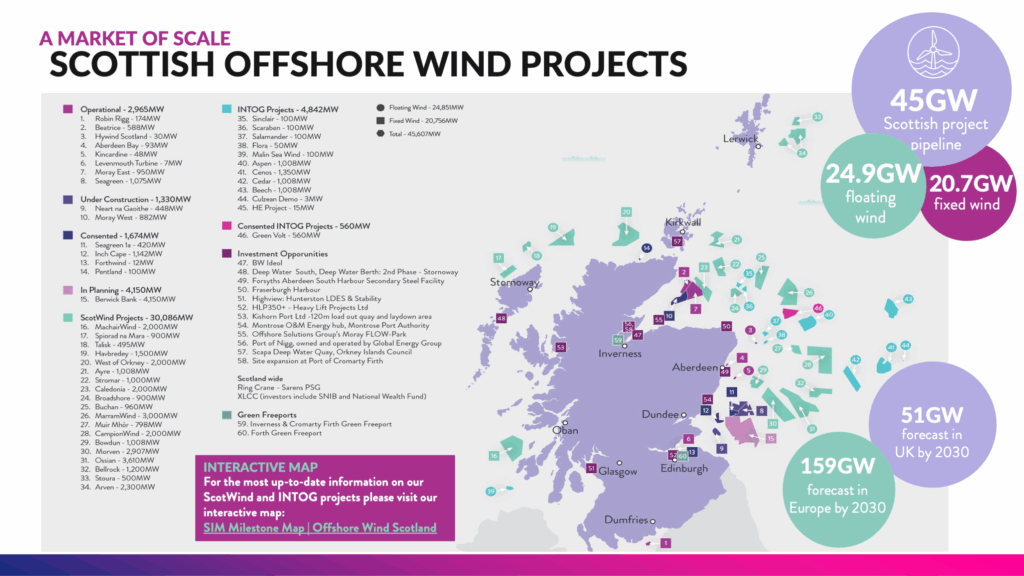
Scotland’s offshore wind sector is not just a local opportunity—it’s a launchpad for servicing the broader European market. With a two- to three-year competitive advantage and a clear roadmap for growth, Scotland is calling on international partners to help build the future of clean energy.
At Oceantic’s IPF conference, happening February 9-12, 2026, in New York City, attendees will have the opportunity to meet with Scottish companies participating in the event. Additionally, IPF attendees will learn more about floating offshore energy and strategies for developing components on a global scale. Sessions on operations and maintenance (O&M) will also be available at IPF where attendees can learn about emerging innovations and new technologies that can be implemented both domestically and internationally. Book your hotel and register today.


